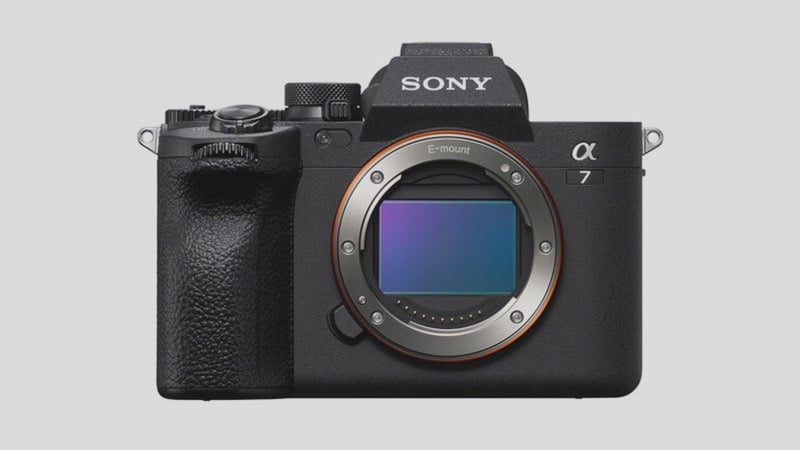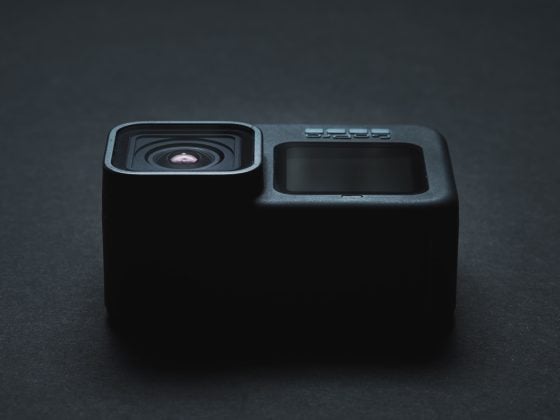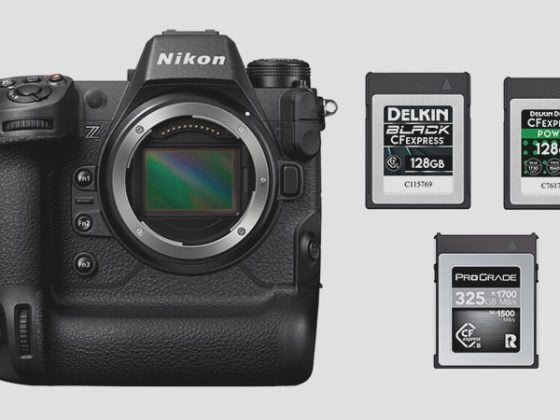The Sony A7IV is finally upon us! I know a lot of people were waiting for this one, and I told a lot of people to wait for this one, not to buy the A7IV per se, but because the release of this camera would give a better perspective of where we are with this tech at this price.
With Sony increasing the price of this camera to 2500 USD, suddenly some of the lower-priced cameras like the A7c, Z6II, and Panasonic S5, look even more attractive to photographers who just need a camera on a budget.
I’m seeing that people aren’t as enthusiastic about this camera as I was expecting. Most of that comes from the higher prices, but there are also some limitations to cameras when compared to some of the interesting competition. It’s complicated so I’ll break it all down.
You can see all the specs here at B&H.
Sony A7IV – B&H – sponsored link
Sony A7IV The Good, The Bad & The Annoying
Here are the important details of the A7IV including information about the hidden specs and a little bit about why I think some people are disappointed.
I don’t have my hands on this camera but might trade out my A7rIII for it, so I like to write articles like this to sort of collect my thoughts.
Overall I like how this camera is positioned.
The Good
These are all the features that I think are pretty cool that the new Sony A7IV offers. There is a lot I like here.
The New Positioning
Sony has repositioned this camera into being a mid-tier full-frame camera, and I think that’s currently throwing a lot of people off. The previous A7III was an entry-level full-frame camera priced at 2,000 USD, it was a nice camera for the time on the day of the launch and it caught everyone’s attention.
Now the A7c is the Sony entry-level full-frame camera, and most people aren’t aware, but it does have some nice upgrades over the A7III with improvements to the autofocus features and an updated menu system.
Compared to the competition, Nikon has their Z6II which is still a 2,000 camera. The Sony A7IV is no longer positioned to compete in that price range and is more appropriately compared to the Canon R6 which does some things better, and some things worse.
Is the increased price justified? Maybe. Atomos charges you 100 dollars to unlock H.265 as a licensing fee for the technology, and the A7IV has H.265 so that right there increases the price. A new higher resolution EVF, also increases the price. But it’s worth it in my opinion. These were two huge things missing from the A7III.
I actually really like Sony’s full-frame camera positioning now. For photographers that have no interest in video, they can grab something like an A7c, or older A7III and not have to pay extra money for the licensing that comes with including H.265. Or grab an A7rIII, it’s still an awesome camera which is why I still have mine.
Landscape photographers still have a nice A7IV, and sports shooters have the A9II or A1 that does it all.
There is also the A7sIII or FX3 which are the go-to systems for fairly compact video.
I imagine the A7IV will kill a lot of A7sIII sales, which is probably why Sony delayed the release for so long. Likely A7sIII sales started to slow down, so they released the A7IV, and I bet we see a big discount on the A7sIII soon, as that camera was insanely overpriced. It will now be better I think for Sony to try to tempt videographers into buying an A7sIII plus an A7IV as a B cam if they can get the pricing right.
Or, my second theory on this new pricing – this could just be the new price for this type of camera. We got hit pretty hard with inflation this last year. Everything is more expensive now. Fed says it’s transitory, but now they’re saying this high inflation is set to last, now some prominent investors are saying it’s transitory again. We’ll just have to see.
New Camera Specs
There is a new 33MP sensor. I love this. I loved the 30MP sensor in the Canon 5DIV and I love it in the Canon R. It’s a very versatile resolution to work with and allows you to do everything well with very acceptable results when shooting landscape photography, but not so massive of files that it’s too taxing on your system.
I haven’t seen anything about the AA filter yet on this sensor.
We have a bunch of new body upgrades – new dials, a new grip a new menu system. A slightly bigger camera which is good for people with normal-sized hands.
We have a new and improved EVF with 3.68m-Dot and a 120fps refresh rate.
Flippy screen. Vloggers like these and they are useful for vlogging. I don’t like these for photography, but some people think they like them, but they don’t like them, they just tricked themselves into thinking they like them because they spent all this money on a camera that has it. Sometimes they are handy for landscape shooting or situations where the camera is in strange positions. But mostly they are horrible, especially for street photography where you have to fold out a giant wing when trying to be stealthy shooting from the waist. This trend will die next as more affordable vlogging cameras with nice specs hit the market.
Dual Memory Card Slots, both slots can use UHS-II, and slot one will even take CFexpress Type-A which likely will not offer any benefit to this camera that only shoots 10fps. With the Sony A7III, and A7rIII the second slot was only UHS-I. This was very limiting when shooting burst with a backup configuration.
New and improved autofocus system. Now you can have real-time tracking with eye detection. It’s pretty handy, the A7III didn’t have this. It interesting watching all the influencers now admit the A7III autofocus wasn’t THAT good, like I’ve been saying.
New Video Features
The big thing this camera added that likely caused it to have such a massive price increase is for the video features.
The A7IV now shoots 10-bit 4:2:2 H.265 internally and 4:2:2 externally with bitrates up to 600Mbps.
The camera will sample the entire 7k sensor to produce the 4k file so it’s going to be similar to what Canon does with their 4k HQ mode.
It also has all the new creative looks as well and a new feature called Focus Breathing Compensation. Since a lot of the Sony lenses focus breath heavily, this will digitally correct for this in-camera at the cost of a crop. This is pretty cool. I wonder if it pulls the 7k sensor data, or if it crops the 4k generated file, then scales that. It sounds like it crops and scales the 4k image, but this is one of those hidden specs and it will be a while before anyone knows for sure.
The A7IV will shoot 4k60p, but it will have a 1.5x crop.
All the latest AF and tracking modes are now available in video shooting. Not a stacked sensor, so not quite the A9II or A1 readout speeds.
A new focus map feature that uses color blocks to let you know what’s in focus.
Unlimited video recording time.
Full-Size HDMI connection.
The Bad
There are a few not-so-great things about this camera this is causing less than expected hype. Especially for photographers who only care about photography.
Expensive
At $2,500 it’s a new class of camera. It’s not our entry-level camera like we were used to. Higher resolution sensor, better EVF, better body. Again this new pricing could just be from inflation.
Sony no longer will have a $2,000 with all the modern bells and whistles, which I think is what everyone was expecting. Just take the A7III, and modernize it with specs, but instead, they took it, and upgraded it while pushing it into a new market.
This puts the A7IV in the price target of the Canon R6 and the Canon R6 does a lot of things better while still being a year older. There are a lot of differences so I’ll have to put that in a different article. The good news is there is no clear winner. So it will be more important than ever to compare specs when trying to decide which brand to go with. Or save $500 and get the Nikon Z6 II which is the best camera at that $2000 price range.
No GPS, which is pretty standard in a camera of this price range.
4k60 with a 1.5x crop but less rolling shutter. The Canon R6 will do 4k60 with only a baby crop but overheats more quickly. And the Canon R6 doesn’t let you have aperture priority shooting in video modes which is a deal-breaker for some. The Nikon Z6 II also shoots 4k60 but with a 1.5x crop similar to the Sony A7IV.
3″ 1.03m dot screen. This is kind of a joke at this point. Sony also varies the resolution of their screens depending on what you’re doing, like recording video and it’s always been a pretty terrible experience. Hey but battery life is good! And at least the EVF is good now. It’s just, manual focus on a 3″ 1.03m screen is not as great once you get used to the 3.2″ 2m-dot screens.
Canon R6 uses a 3″ screen at 1.62m-Dot. Nikon Z6 II uses a 3.2″ screen at 2.1m-Dot. And the Nikon screen doesn’t make you fold out a giant wing when shooting from the waist which makes it a bit more stealthy for street shooting, but it’s more difficult to film yourself when doing run and gun video.
Bad Rolling Shutter – It’s being reported that the 4k rolling shutter is pretty bad when sampling from the 7k full sensor. This is a downgrade from the A7III.
The Annoying
Only 10fps burst with compressed RAW, which is lossy. 10fps is the same as the A7III, but behind the Nikon Z6 II which shoots 14fps, and way behind the Canon R6 which shoots 20 with the electronic shutter.
The A7IV only shoots 5fps with lossless compression or uncompressed RAW. Which would mean there is now lossless compression. This is a huge deal, but unfortunately, it’s only 5fps, which is sad. We don’t know exactly what speed uncompressed RAW shoots at, but it’s not 10fps. I personally never burst higher than 5fps so I would just leave the camera in lossless mode and never worry about it. It also doesn’t shoot any faster in uncompressed RAW.
In cameras like the Nikon Z6, you could shoot lossless compress and the camera would drop to 9fps vs the 12 with lossy. So Sony is definitely behind the competition here, but, it’s using a 33MP sensor, so some drop-in specs that involve sensor readout speeds are to be expected at this price.
Camera Feels Cheap In The Hand – For some reason, the camera to me is feeling a little cheaper than my Sony A7rIII. Buttons are still squishy, the grip kind of feels hollow and plastic even with a battery in it. The flip-out screen feels like cheap plastic. Something is off compared to some of their other cameras, and other brands in general.
Sony is still the worst camera at adapting third-party lenses, like Leica M lenses. There is nothing they can do about this, they can’t just change the spec now of their micro-lenses and cover glass, or it will throw off the performance of all their existing lenses, but you definitely won’t want to buy Sony, if you have a collection of M lenses or other retro film lenses.
The Biggest, Most Annoying Thing About The Sony System
I’m having some fundamental problems with this camera and the Sony system in general right now which are kind of bugging me and it’s not just the 3.0″ 1.0m-Dot screen.
It’s the issue with the overall stability of the system when shooting video which isn’t a problem with other brands.
Here is the problem.
If you’re a run-and-gun video shooter, a lot of the Sony lenses focus breath pretty hard. This is where the field of view changes as you zoom. The Viltrox lenses also have very limited focus breathing by the way. So you can buy lenses to get around this, but third-party lenses from Viltrox don’t have the best AF. Kind of a catch-22. ( By the way, most of the Nikon prime lenses do not focus breath. The 85mm does a little. )
Sony added the Focus Breathing Compensation to fix this, which is great, but it introduces a pretty significant crop, which is not so great.
Next Sony’s stabilization with IBIS in video mode is not amazing. The A7IV has Active Stabilization to help with this which is great, or you could use Catalyst which is great. But you need a faster shutter which is not great, and even worse, it introduces a significant crop that is not great.
To shoot clean video without focus breathing you need to use Focus Breathing Compensation, which introduces a crop. Then if you want good stability, you have to use some sort of digital stabilization, which introduces even more crop. Now you’re running around shooting 4k video with a massive crop to get around the poor hardware design with the weak IBIS and lenses that focus breath.
This is why other systems, like Nikon or Fujifilm, make more sense to me – they don’t have these fundamental hardware problems, although, I much prefer Sony’s way of doing things to Canon. At least the A7IV feels like a fully complete camera with nothing intentionally taken out.
Conclusion
Overall, it’s not a bad camera, it does everything you need it to do very well and it fixed so many of the big issues we saw in the A7III. New menu, lossless compression, h.265 video, the autofocus you were expecting, and more. While the A7III was the most overrated camera of all time, the A7IV fixes so many issues that now puts it more in line with the competition and it’s overall a very practical choice compared to a lot of the other cameras out there today.
While in the past I would say you were crazy to buy an A7III over a Z6, Z6II, or Canon R6, I can’t say the same about the A7IV. Sony has attacked the competition and attacked it well.
One other point, it’s also one of the fastest cameras in this price range at writing to UHS-II memory cards, which means it has some nice hardware inside. You can see the Sony A7IV Memory Card Speeds Tests here.
| **This website contains affiliate links. We will earn a small commission on purchases made through these links. Some of the links used in these articles will direct you to Amazon. As an Amazon Associate, I earn from qualifying purchases. |







